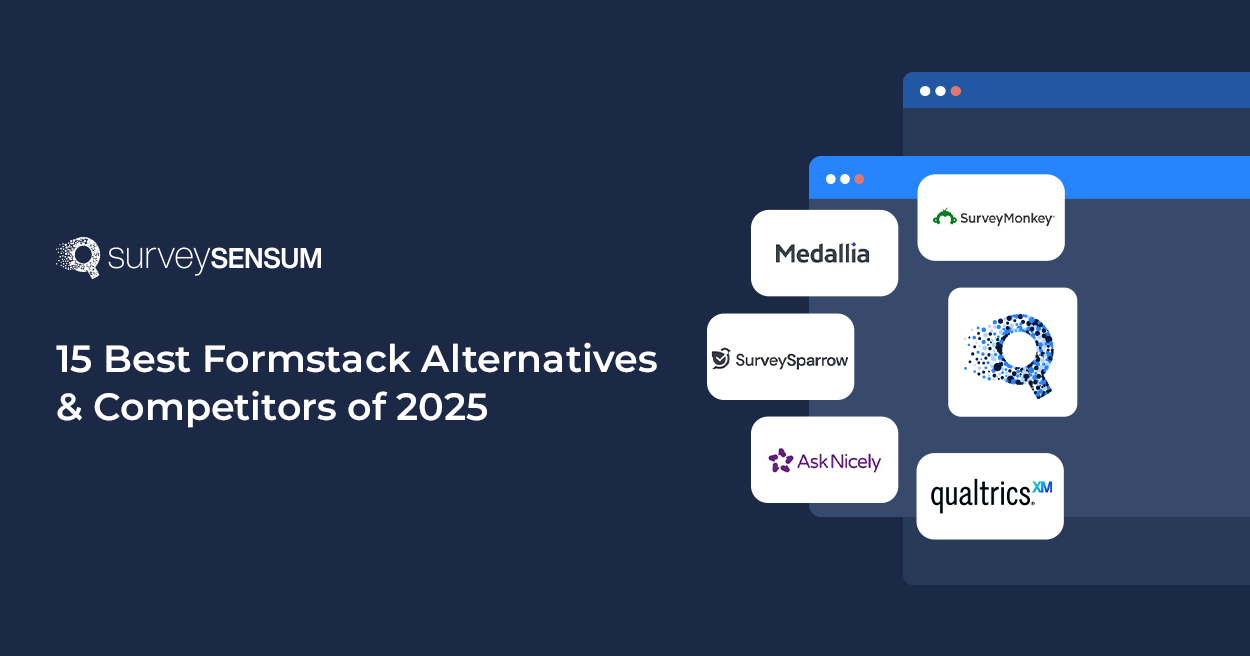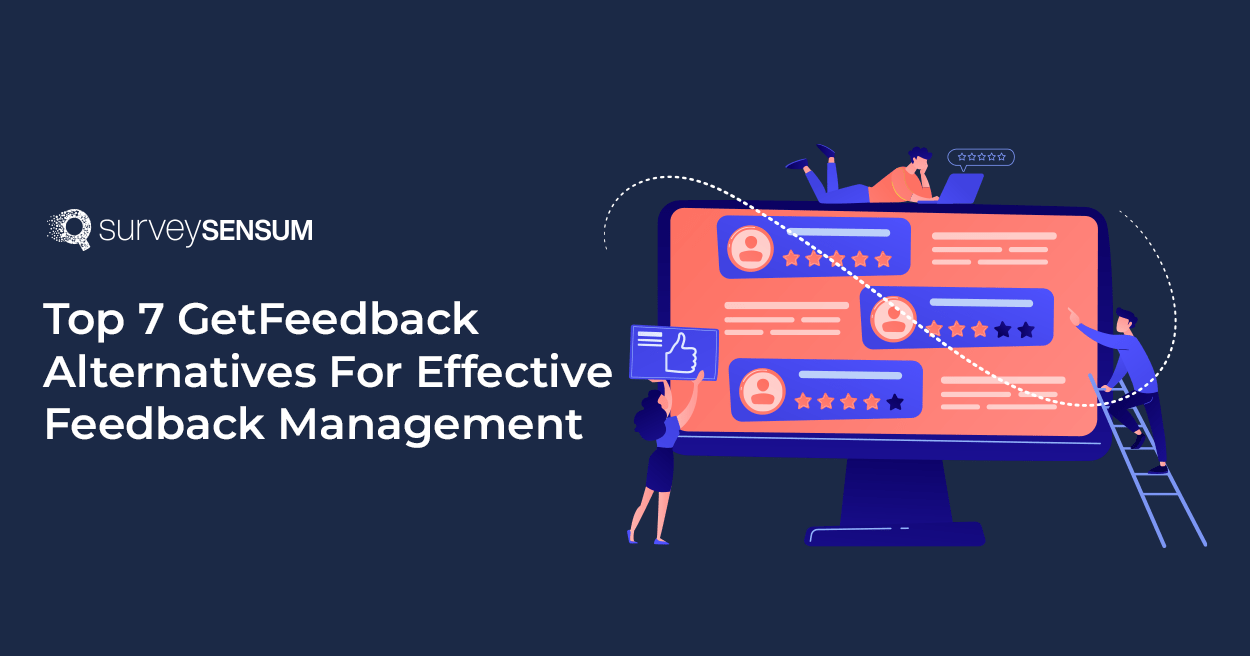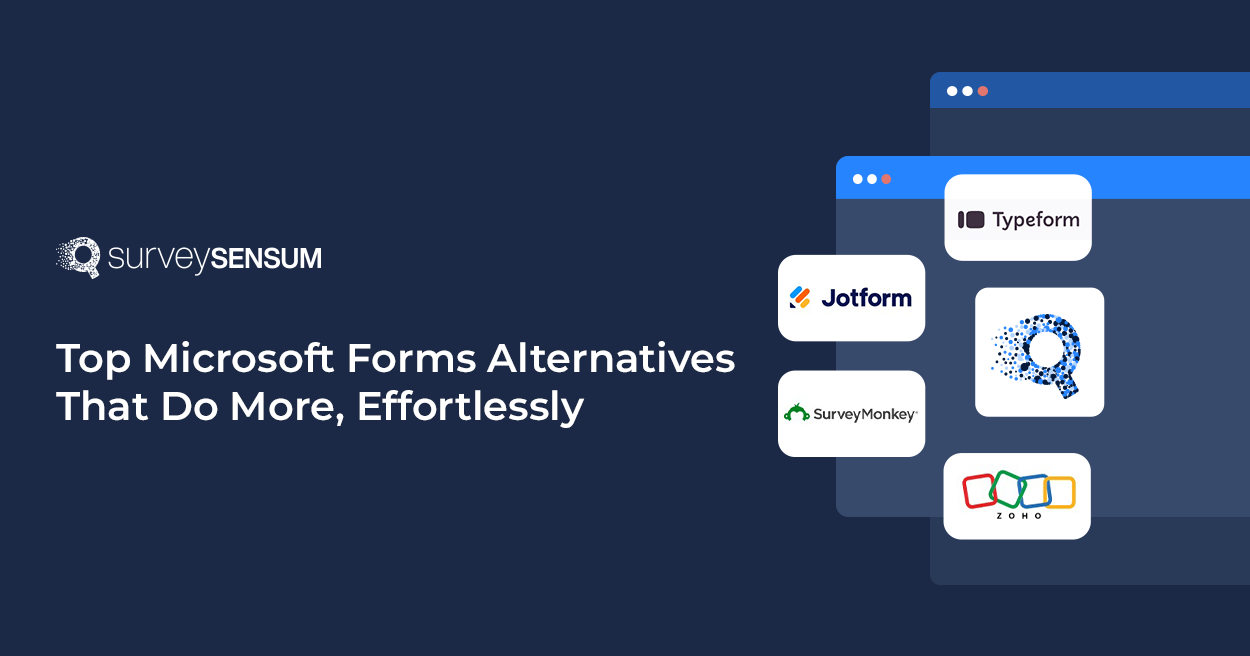
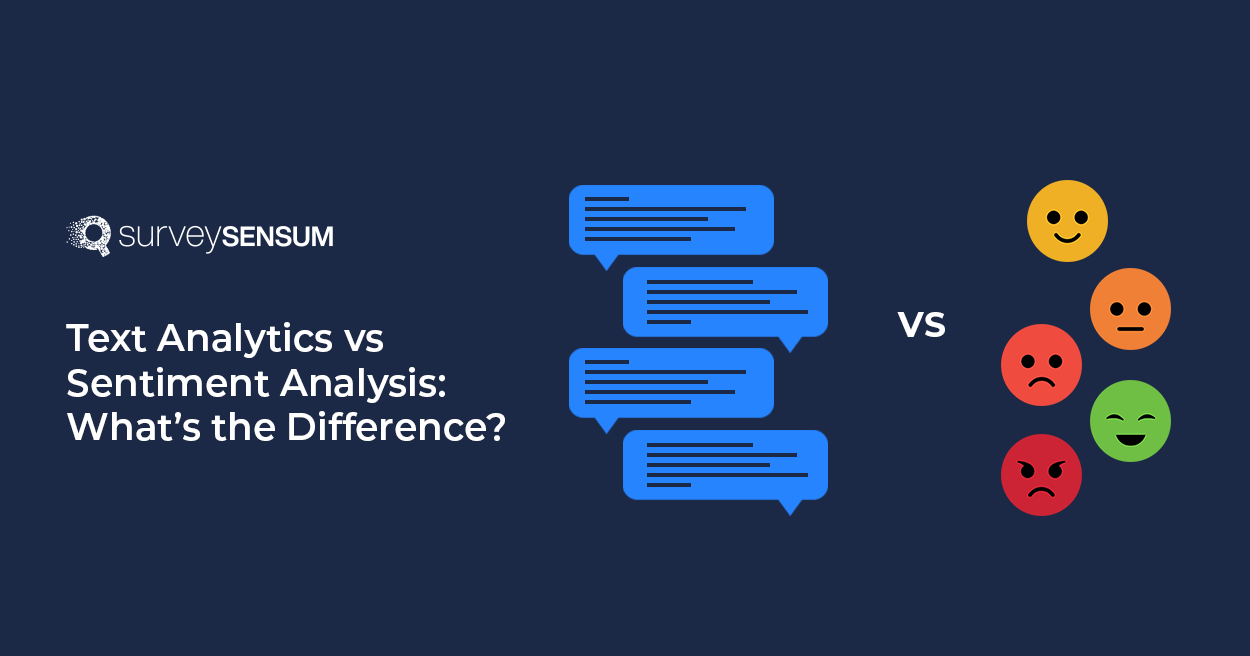
Out to do a detailed analysis of your customer feedback/review? But wait, are you doing it right?
When the world is rapidly turning towards AI, businesses are relying on advanced techniques to extract valuable insights – customer reviews, social handles, emails, chats, surveys, and whatnot.
Amongst many in the market, two techniques stand out – Text analysis and Sentiment Analysis.
But what’s the difference between the two? Aren’t they basically the same thing? Not quite! While both deal with analyzing text, they serve different purposes. Let’s discuss them in detail.
First, What is Text Analytics?
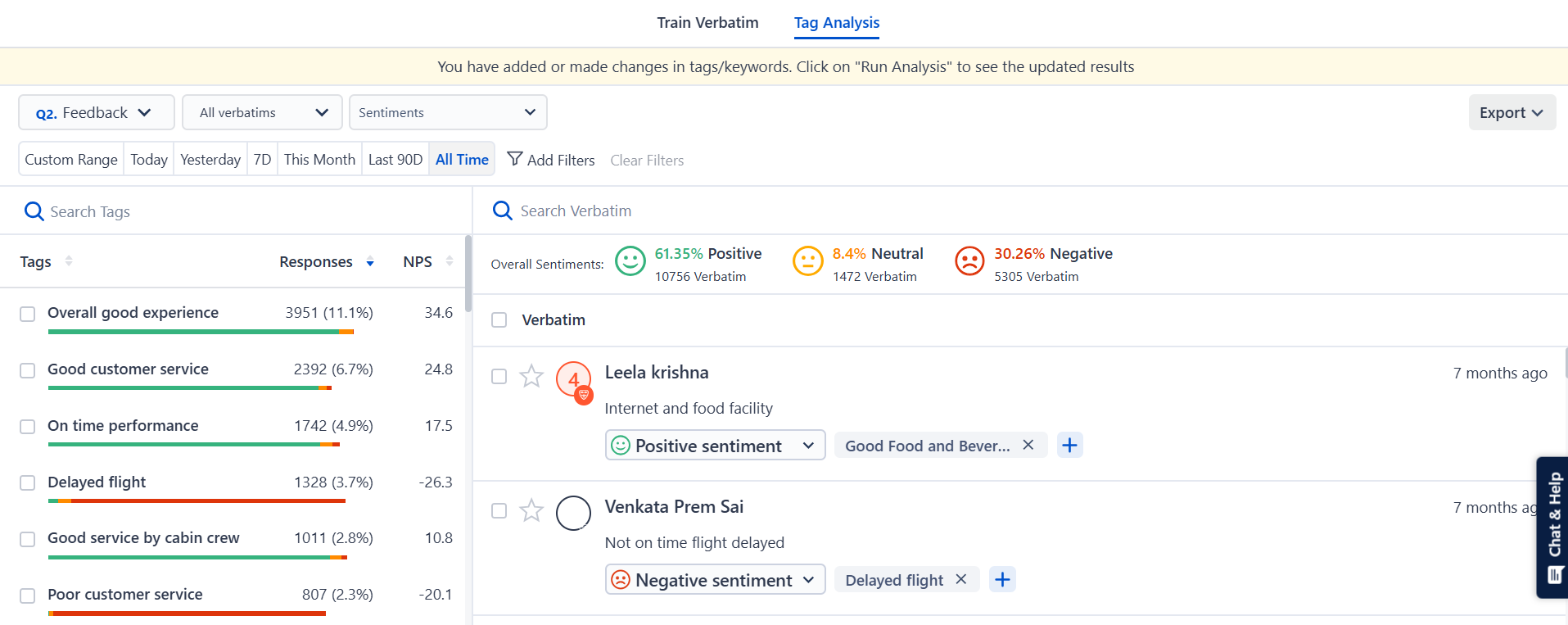
Text analysis, also known as text mining, is the process of extracting useful information from unstructured text data. It involves identifying patterns, keywords, relationships, and trends within text to make it easier to analyze and interpret. Some techniques used in text analysis are:
- Tokenization: Breaking text into smaller parts like words or phrases.
- Named Entity Recognition (NER): Identifying names, places, organizations, and other key entities.
- Topic Modeling: Grouping similar words or phrases to detect themes within the text.
- Text Classification: Categorizing text into predefined labels (e.g., spam vs. not spam).
What is Sentiment Analysis?

Sentiment analysis, also called opinion mining, is a specialized form of text analysis that focuses on detecting the emotional tone behind a piece of text. It determines whether a given text expresses a positive, negative, or neutral sentiment. Some techniques used in sentiment analysis are:
- Lexicon-based Analysis: Using predefined lists of words associated with specific emotions (e.g., “happy” = positive, “terrible” = negative).
- Machine Learning Models: Training algorithms on labeled datasets to predict sentiment based on language patterns.
- Aspect-based Sentiment Analysis: Analyzing opinions on specific aspects of a product or service (e.g., “The battery life is amazing, but the camera quality is poor”).
Now, before talking about the differences, let’s take a look at their similarities.
Similarities Between Text and Sentiment Analysis
Even though these two techniques are different in their objectives, they do share a few similarities. Here’s how they overlap.
- Both Work With Unstructured Data: Both text and sentiment analysis deals with unstructured customer data and feedback, such as texts, emails, surveys, social media conversations, online reviews, etc. Both techniques transform raw text into structured data that can be analyzed for patterns and trends.
- Can Be Applied to the Same Text Data Sources: Both techniques can be applied together for comprehensive analysis. Common data sources for both include product reviews, social media posts, emails, call transcripts, and survey responses.
- Use Natural Language Processing (NLP): Both techniques rely on NLP to interpret human language, breaking down text into understandable components like words, phrases, and syntax.
By combining text analysis and sentiment analysis, organizations can gain a deeper understanding of textual data, making more informed and strategic decisions.
Let’s discuss the key differences and applications of sentiment analysis vs text analytics.
Text Analysis vs Sentiment Analysis: Key Differences
Both text analysis and sentiment analysis are essential for making sense of large amounts of textual data, but they serve different purposes.
What They Analyze?
Both text analysis and sentiment analysis involve different types of analytical methods, each serving specific objectives.
| Aspect | Text Analytics | Sentiment Analysis |
| Purpose | Extracts insights and structures text data | Identifies emotional tone and sentiment in text |
| Key Techniques | Topic Modeling, Text Classification, NER, Keyword Extraction, Relationship Mapping | Polarity Detection, Emotion Detection, Aspect-Based Sentiment Analysis, Intent Analysis |
| Focus Areas | Identifies themes, categories, keywords, and entities | Determines positive, negative, and neutral emotions and intent |
| Application | Summarizing large text data, categorizing information | Understanding customer opinions, brand reputation |
Text Analysis majorly includes:
- Topic Modeling: Identifies common themes and topics within a dataset. Useful for summarizing large volumes of text.
- Text Classification: Categorizes text into predefined groups, such as spam vs. non-spam or news categories (sports, politics, entertainment, etc.).
- Named Entity Recognition (NER): Detects important entities like names, organizations, locations, and dates.
- Keyword Extraction: Identifies the most relevant words and phrases in a document.
- Relationship Mapping: Finds connections between words, concepts, or entities within text.

Sentiment Analysis majorly includes:
- Polarity Detection: Determines whether a piece of text expresses a positive, negative, or neutral sentiment.
- Emotion Detection: Goes beyond polarity to identify specific emotions such as happiness, anger, sadness, or excitement.
- Aspect-Based Sentiment Analysis: Analyzes opinions on specific aspects of a topic, such as battery life and camera quality in a phone review.
- Intent Analysis: Determines the underlying intent of a statement, such as a customer’s likelihood to buy or cancel a service.
SurveySensum’s AI-powered Text and Sentiment analytics software helps businesses listen to 360-degree VoC across multiple channels – including in-app feedback, chats, Play Store reviews, emails, surveys, and more. By leveraging AI, the tool automates the process of analyzing thousands of open-ended responses, detecting recurring themes, and identifying top trends and sentiments within seconds, saving businesses from the manual effort. It also helps gauge overall customer sentiment and satisfaction levels, providing valuable insights for improving customer experience and decision-making.
Don’t waste time sorting through endless customer feedback. Leverage SurveySensum’s AI-powered text and sentiment analysis to tag, categorize, and analyze sentiment automatically with 99% accuracy!
How Do They Work?
Both text and sentiment analysis rely on computational techniques, but they process data in different ways.
| Aspect | Text Analytics | Sentiment Analysis |
| Core Methods | NLP, Machine Learning, Statistical Techniques | Lexicon-based methods, Machine Learning |
| Approach | Rule-based (keyword matching, regex) & AI-driven (deep learning) | Uses sentiment dictionaries & ML models trained on labeled data |
| Focus Areas | Identifies patterns, structures, and meaning in the text | Detects sentiment polarity (positive, negative, neutral) |
Key Techniques Used in Text Analysis:
- Topic Modeling: Identifies the most discussed topics in customer reviews.
- Keyword Extraction: Extracts important keywords that help in trend identification.
- Text Classification: Automatically categorizes customer queries, reviews, and emails into predefined categories.
- Named Entity Recognition (NER): Identifies names, locations, and organizations in text data.
Key Techniques Used in Sentiment Analysis:
- Polarity Detection: Determines whether text is positive, negative, or neutral.
- Emotion Detection: Identifies emotions such as happiness, anger, frustration, and excitement.
- Aspect-Based Sentiment Analysis (ABSA): Analyzes opinions on specific aspects of a product or service (e.g., “The battery life is great, but the camera is poor”).
- Intent Analysis: Detects the underlying intent behind a message, such as purchase intent or churn risk.
SurveySensum’s AI-powered text and sentiment analysis works by automatically tagging and subtagging feedback into relevant categories based on relevant keywords and themes. While automation is there, you can also train the AI models to improve accuracy and customize categorization to fit specific business needs. The AI analyzes up to 10,000 open-ended responses in just 5 seconds with 99% accuracy, allowing businesses to quickly identify key trends and sentiments without manual effort.
Track brand perception across social media, surveys, and reviews, detect negative sentiment early to take corrective action, and build a customer-centric brand with AI-driven insights with SurveySensum’s AI-powered text and sentiment analysis!
Where To Apply Them?
Although both techniques are used in text analysis-related fields, they have different practical applications.
| Application Area | Text Analytics | Sentiment Analysis |
| Customer Feedback | Identifies themes in feedback and support tickets | Tracks customer sentiment about products/services |
| Content Categorization | Classifies news, articles, and documents | Analyzes opinions within specific categories |
| Fraud Detection | Detects suspicious text patterns in banking and finance | Identifies deceptive or manipulative language |
Text Analysis Applications:
1. Customer Feedback Analysis: You can leverage text analysis to identify common themes in customer reviews and support tickets.
2. Categorization: News websites and content aggregators classify articles into different categories automatically.
3. Fraud Detection: Banks and financial institutions analyze textual data to detect fraudulent activities or phishing attempts.
4. Medical & Healthcare Research: Extracts important information from clinical notes, medical reports, and research papers.
5. Search Engine Optimization: Identifies trending keywords and topics to improve search rankings.
Sentiment Analysis Applications:
1. Social Media Monitoring: You can track public sentiment around your brand, products, or industry trends.
2. Market Research: You can analyze consumer sentiment towards competitors or new product launches.
3. Customer Service Automation: Chatbots and virtual assistants use sentiment analysis to detect customer frustration and escalate issues.
Now that the similarities and differences between text analytics and sentiment analysis are clear, let’s talk about implementing them in your business.
Stop spending hours manually analyzing feedback – SurveySensum’s AI-powered text and sentiment analysis extracts key trends, customer emotions, and critical insights in seconds!
How to Implement Text and Sentiment Analysis in Your CX Strategy?
By leveraging AI-powered analytics, you can extract insights from feedback, automate processes, and make data-driven decisions to improve CX. Here’s a step-by-step guide to integrating text and sentiment analysis into your CX strategy.
STEP 1: Gather 360-VOC Data (From All Channels)
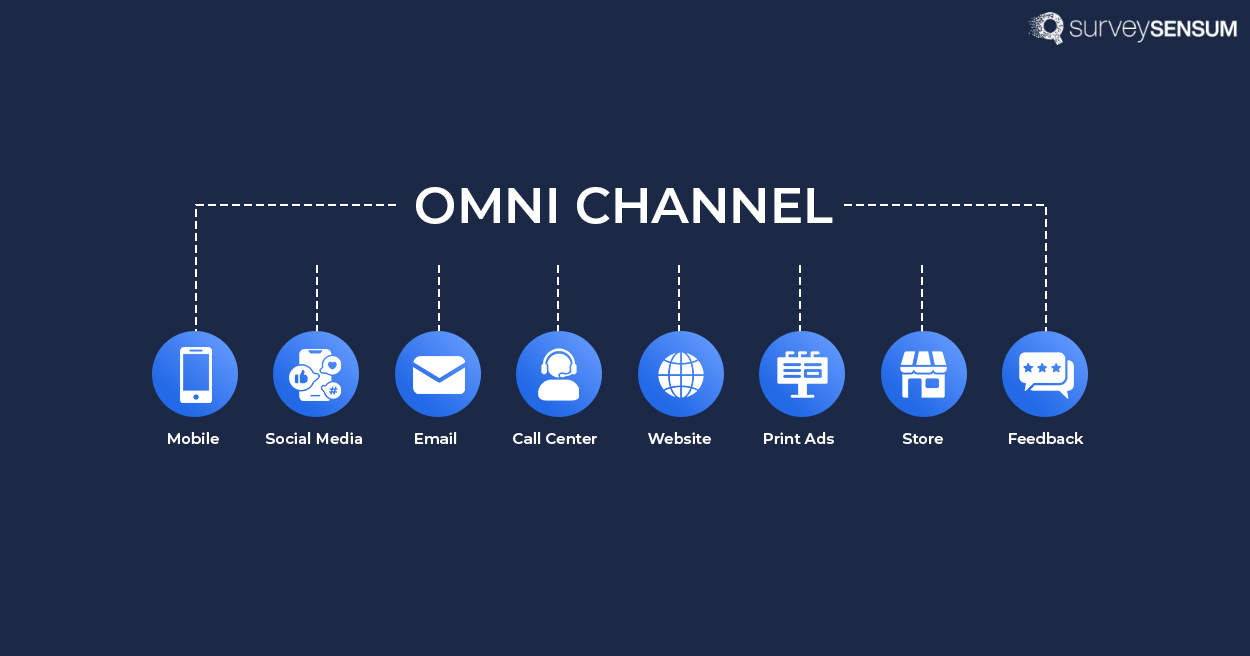
To gain a comprehensive understanding of customer sentiment, you must collect feedback from various touchpoints and channels – whether it’s in-app feedback, chat conversations, Play Store reviews, emails, surveys, or social media. This ensures that you listen to your customers everywhere and not just on one channel.
SurveySensum creates a consolidated and unified view of customer data. Instead of siloed insights from different channels, you get a holistic understanding of customer sentiment, pain points, and expectations in one place.
STEP 2: Tagging & Categorizing Customer Feedback
SurveySensum leverages AI to automatically categorize 10,000+ feedback entries into relevant tags or categories based on their themes, making feedback analysis effortless and highly efficient.

It provides you with three flexible options for tagging and categorization:
- Manually add custom tags – Define and apply your tags to feedback for precise categorization.
- Leverage AI-generated tags – Let AI automatically tag responses based on detected themes.
- Train AI based on manual tagging – Customize AI tagging by manually tagging the first 100 feedback entries, allowing the system to learn and improve accuracy over time.
STEP 3: Identify Key Drivers With Role-Based Dashboard
Categorizing feedback isn’t enough – you need to understand what EXACTLY drives customer satisfaction and dissatisfaction.
SurveySensum’s powerful role-based dashboard helps you to ensure that relevant stakeholders get the ONLY insights they need — so that your team doesn’t get overwhelmed by information and focus on the goal.
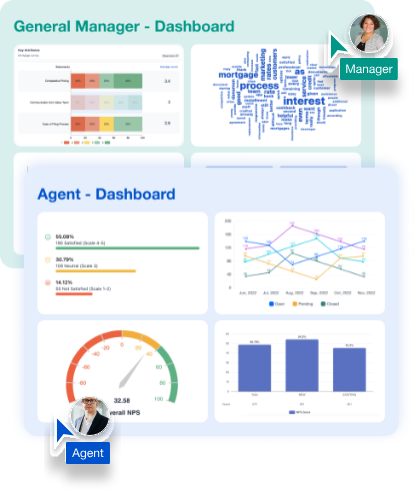
With this data, you can
- Analyze Sentiment-Based Trends – Identify recurring complaints or positive feedback patterns.
- Correlate Sentiment with CX Metrics – Align sentiment analysis with NPS, CSAT, and CES scores to uncover issues affecting customer experience.
- Benchmark Against Competitors – Compare sentiment trends with competitors to spot industry gaps and opportunities.
SurveySensum provides AI-powered insights that pinpoint the key drivers of customer sentiment, allowing you to take targeted actions that yield the most impact.
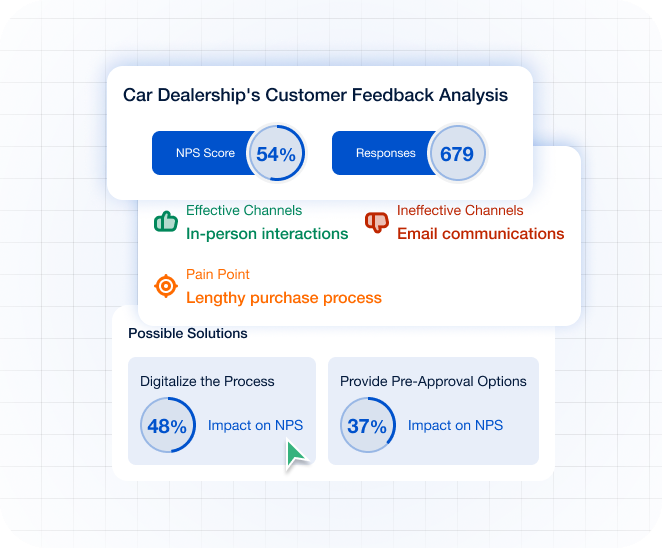
STEP 4: Close the Loop With Real-time Ticketing System
Don’t just analyze feedback – take action. Use a ticketing system to address customer concerns and improve CX in real time.
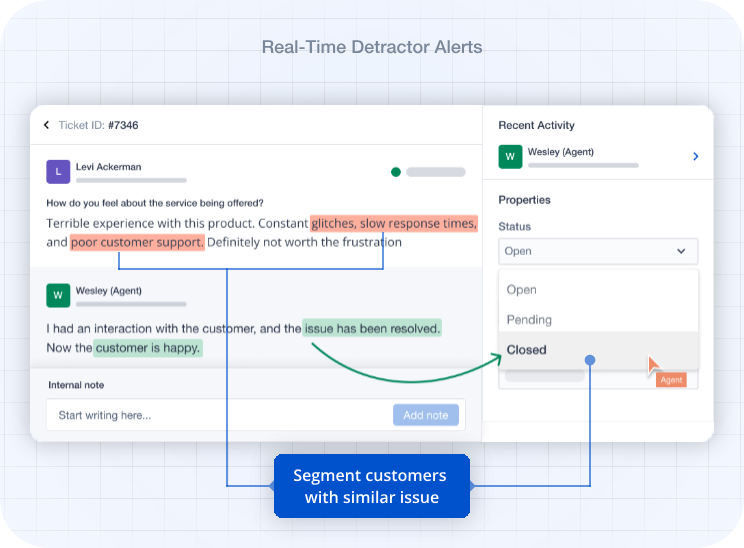
SurveySensum’s closed loop ticketing system helps you to
- Automatically Create Tickets – Convert negative feedback into tickets for immediate resolution.
- Assign/Escalate to the Right Teams – Route tickets to the relevant department (support, product, or operations).
- Visualise the Progress with Dashboard – Monitor progress and ensure timely follow-ups.
STEP 5: Schedule Reports Directly to the Inbox

Eliminate the need to create multiple reports many times. Automatically schedule reports to be sent to the relevant stakeholders directly into their inbox – be it weekly, monthly, or quarterly.
Effortlessly track key metrics, uncover patterns, and optimize strategies with SurveySensum’s intuitive and role-based dashboards!
Where to Implement Text and Sentiment Analysis in Your CX Strategy?
Text and sentiment analysis allows you to make data-driven decisions that improve marketing strategies, sales effectiveness, customer experience, and even workplace culture. Here’s how text and sentiment analysis can help you achieve your CX goals and improve different areas of business.
1. Marketing and Product Management
For marketers and product managers, customer feedback, trend monitoring, and competitor analysis can help create better campaigns and products. Here, text and sentiment analysis help by,
- Analyzing online reviews, social media conversations, survey responses, etc to understand customers’ perceptions of new product launches and features.
- Helping analyze customer feedback in real-time, detecting new trends before competitors do. This allows you to stay ahead of market shifts, ensuring that your marketing strategies align with customer interests.
- By analyzing discussions about competitors, you can understand strengths and weaknesses in the market.
With SurveySensum you can empower your marketing teams by providing them with deep sentiment insights, allowing you to fine-tune your messaging, highlight winning product features, and craft campaigns that resonate with the target audience. By integrating real-time sentiment tracking, you can quickly adjust marketing strategies to maintain a positive brand image.
2. Sales
Sales teams often struggle with identifying high-quality leads and addressing potential customers’ concerns. Text and sentiment analysis can help by:
- Analyzing customer conversations to understand buying intent. If sentiment analysis detects strong interest, sales representatives can prioritize outreach to those prospects.
- By analyzing emails, chat logs, and recorded sales calls, you can uncover common objections that delay or prevent conversions.
- Personalizing sales outreach using sentiment insights. This enables the sales team to understand how prospects feel about a product or service and tailor your approach.
With SurveySensum you can empower your sales teams to prioritize leads based on sentiment analysis. If a prospect expresses frustration with a competitor’s service, the sales team can position your offering as a better alternative and tailor your messaging accordingly. By leveraging data-driven insights, you can increase conversion rates and improve customer acquisition efforts.
3. Customer Support
Customer service teams play a critical role in retaining customers and ensuring a positive brand experience. Text and sentiment analysis help support teams by:
- Identifying negative emotions in support tickets, chat logs, and social media interactions, allows you to escalate urgent cases and resolve them faster.
- Monitoring customer sentiment across multiple support channels – email, chat, phone, or social media. This ensures that no feedback is neglected.
- By analyzing post-interaction surveys and customer complaints, you can evaluate agent performance and identify areas for improvement.
SurveySensum’s sentiment analysis supports your teams in tracking emotional trends in customer interactions, ensuring that your teams respond promptly to frustration and dissatisfaction. Not just that, with its real-time ticketing system, every piece of detractor feedback is instantly flagged and escalated to the right team automatically and you can also see your ticket trends to determine resolution time, remaining open tickets, etc.
4. Social Media Monitoring
Monitoring social media sentiment helps you understand public sentiment about the product and brand, manage online crises, and manage brand reputation.
- Sentiment analysis helps brands monitor how customers feel about your products, services, and campaigns on platforms like Twitter, Facebook, LinkedIn, and Instagram.
- You can identify potential PR issues before they escalate by monitoring spikes in negative sentiment around your brand.
SurveySensum integrates social media sentiment analysis, helping you track real-time brand perception. If a product launch or campaign generates negative sentiment, the system alerts brands so your team can act quickly to address concerns and protect your reputation.
Text Analytics vs. Sentiment Analysis: Which One Should You Choose?
When it comes to analyzing customer feedback, product reviews, social media discussions, etc text analytics and sentiment analysis are two powerful tools that can help you extract valuable insights. But which one is right for you? Should you focus on understanding what customers are talking about or how they feel about it?
The choice between these two depends on your business goals, the type of insights you need, and how you plan to use the data. However, whatever you choose to focus on, make sure that your CX tool accommodates both types of analysis on the same platform so that if your business goals evolve over time you don’t have to change tools to accommodate them.
Now with SurveySensum, you get exactly that – the best of both worlds. And not only that, but both tools are also user-friendly and can be handled without any prior knowledge of coding or CX. But if you feel stuck then don’t worry about the CX consultation (at no extra charge!) will help you figure out what goals to set, what KPIs to set, what data to analyze, and much more.












